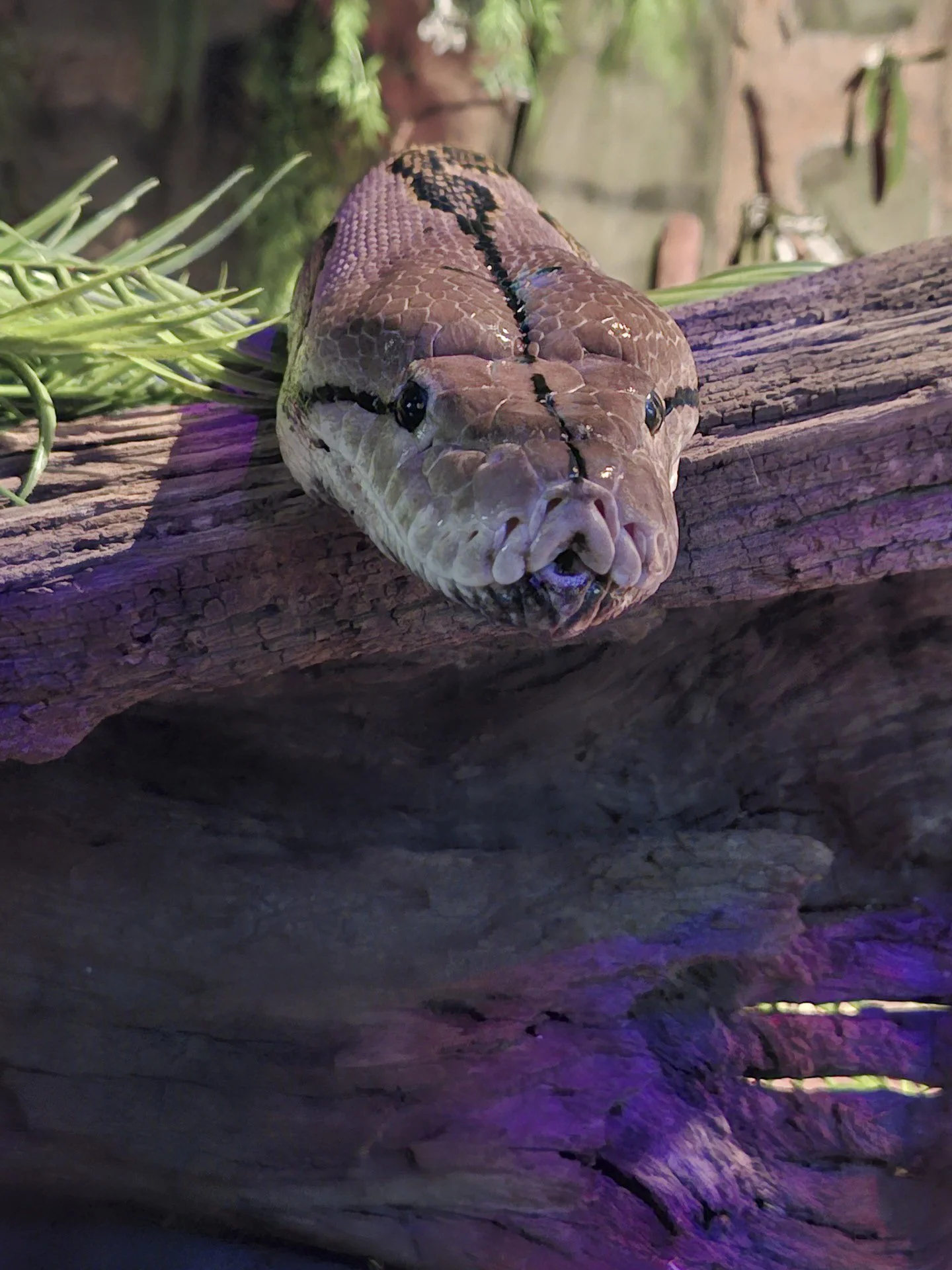Reticulated Python
Hi! I’m a Reticulated Python
Reticulated pythons hold the world record as the longest snake, sometimes reaching lengths up to 6.5 m. While their size makes them slow movers, they can still strike at lightning fast speeds. Like all pythons, they are non-venomous. Instead they have backward curved teeth which grab their prey like a fork. The python then wraps around the prey, not crushing but suffocating it. Each time the prey breathes in the python constricts tighter until the animal can no longer take a breath. Reticulated pythons will eat small mammals, birds and larger animals such as deer and pigs. After a large meal, they may not eat for several months.
Reticulated pythons are found in moist environments such as rainforests and wetlands. Ideally this python prefers temperatures between 24 and 34 degrees celsius and high humidity. These snakes often spend time in bodies of water as they provide the perfect hiding spot to ambush prey. It is also easier for a large snake to move in water rather than land. Smaller reticulated pythons retreat to trees and sometimes crevices in caves.
Like most pythons, the reticulated python is oviparous meaning it lays eggs. Unlike most snakes, the reticulated python female remains coiled above the incubating eggs in order to provide warmth. She will basically ‘shiver’ her body to create warmth.
The National Zoo and Aquarium is home to 1 reticulated python, Robbo.
Facts
Taxonomy
Malayopython reticulatus
Population Movement
Unknown
Current Animals
Robbo
Life Span (captive)
23 - 29 years
Weight
1 to 75 kg (2 lb 3 oz to 165 lb 6 oz)
Reproduction
Males use vibrations to signal to females their mating status. Once a male is chosen by a female he will rub along her spine with his spurs. Spurs are vestigial hind limbs. Reticulated breeding season is concentrated in the months of February and March. They are an oviparous species with viability of the eggs determined on the females ability to protect and incubate them, as well as high levels of humidity. 1 Clutch of eggs will produce an average of 25-50 offspring.
Conservation Status
Least Concern
Group Count
1
Life Span (wild)
15 - 22 years
Size
1.5 to 6.5 m (4 ft 11 in to 21 ft 4 in)
Gestation
60-90 days
Distribution
South and Southeast Asia from the Nicobar Islands, India, Bangladesh, Myanmar, Thailand, Laos, Cambodia, Vietnam, Malaysia, and Singapore, east through Indonesia and the Indo-Australian Archipelago

